Yosemite National Park is a captivating tapestry of natural wonders. Established in 1890, it has evolved into an iconic symbol of pristine wilderness. Sculpted by ancient glaciers, the park boasts towering cliffs, glistening waterfalls, and diverse ecosystems.
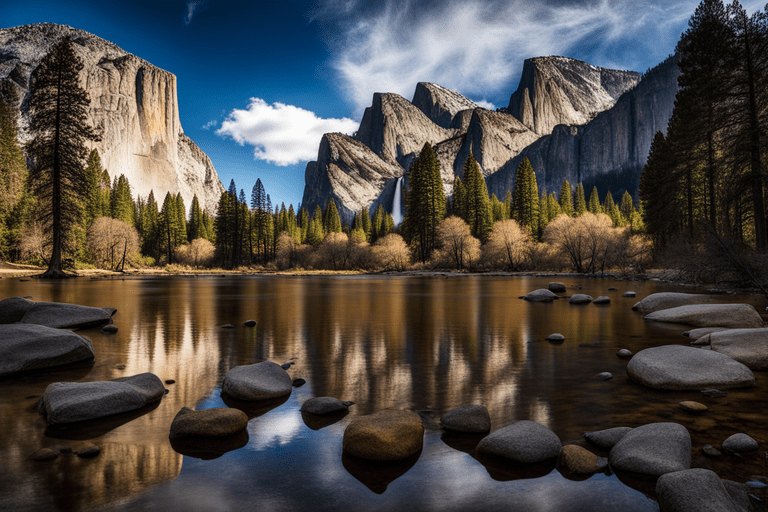
Carved over millennia, Yosemite’s history is woven into its granite peaks and verdant valleys. From the indigenous Ahwahneechee people to the legendary conservationist John Muir, each chapter reveals a unique facet. This living museum, spanning 1,187 square miles, continues to captivate with its geological marvels and rich cultural heritage.
Transitioning through seasons, Yosemite transforms into a kaleidoscope of landscapes. Blanketed in snow, it becomes a winter wonderland, while spring heralds blooming wildflowers. The park’s timeless allure has inspired artists, writers, and nature enthusiasts alike, creating a legacy of awe-inspiring beauty that transcends time and captivates the soul.
General Yosemite Park Information
- Location: California
- Size: Encompassing 1,200 sq. miles.
- Visitor Stats: Attracts around 3.5 million visitors annually, ranking among the nation’s most visited parks.
- Vastness: Three times larger than New York City.
- Etymology: “Yosemite” is derived from the Miwok word meaning “those who kill.”
- Indigenous Legacy: Ahwaneechee Native Americans inhabited Yosemite Valley for over 4,000 years.
Historical Significance
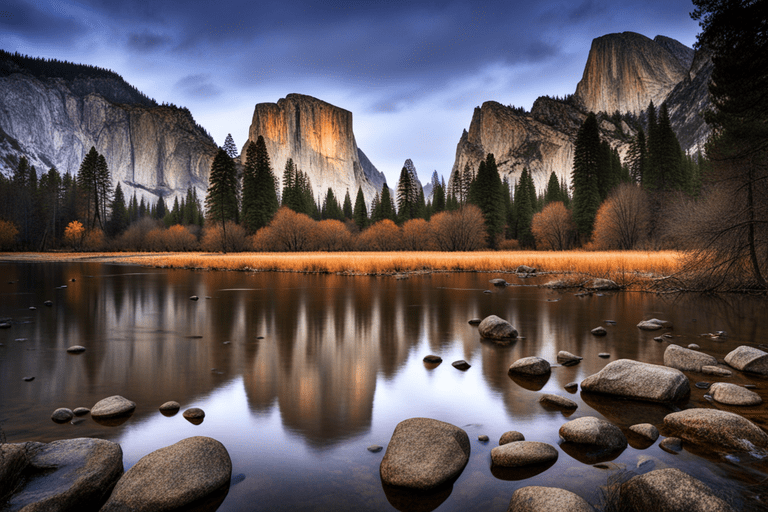
- UNESCO Status: Designated as a World Heritage Site in 1984.
- Preservation Pioneer: President Lincoln designated Yosemite Valley and Mariposa Grove as the nation’s first public preserve.
- Visionary Conservationist: John Muir played a pivotal role in establishing Yosemite National Park.
Natural Wonders of Yosemite
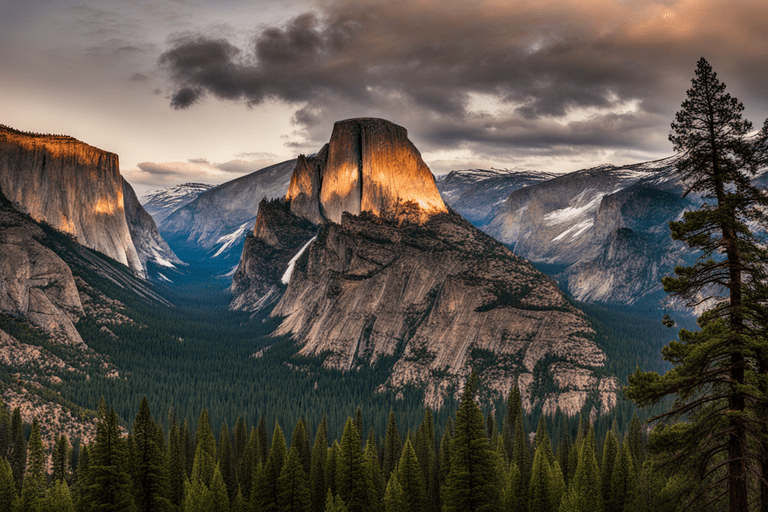
- Arboreal Marvels: Home to renowned giant Sequoia trees.
- Biodiversity: Supports over 400 diverse species.
- Climate: Experiences a Mediterranean climate.
- Geological Marvels: Yosemite Valley shaped by ancient glaciers.
- Nighttime Spectacle: Witness the unique Lunar Rainbow “Moonbow.”
- Golden Hour Glow: Granite rock formations radiate warmth at sunset.
- Geological Heritage: Granite rocks date back 100-85 million years.
- Spectacular Cascades: Yosemite Falls, a top-ranking waterfall globally, drops 2,425 feet.
- Distinct Summits: Half Dome, El Capitan, and Yosemite’s highest peak, Mt. Lyell.
- Monolithic Presence: El Capitan, the world’s largest monolith, rises 3,593 feet.
- Ecological Richness: Home to 11 endangered species, 150 bird species, and 77 mammal species.
- Historic Venue: Once a military hospital, now the park’s most luxurious hotel.
- Seasonal Phenomena: Don’t miss the Annual Firefall and unique waterfalls like Horsetail and Ribbon Falls.
- Reflective Oasis: Mirror Lake offers a stunning reflection of Half Dome.
- Cultural Interpretation: According to the Ahwahnechee tribe, Half Dome symbolizes a Mono-Indian woman.
Yosemite Travel Tips
- Peak Visitation: May through October, with August being the busiest.
- Reservation Necessity: Mandatory, especially post-COVID and during peak seasons.
- Winter Wonderland: Witness approximately 65.3 inches of snowfall in winter.
- Elevational Diversity: Ranges from 2,000 ft to 13,000 ft.
- Olympic Legacy: Bid for the 1932 Winter Olympics.
- Entrance Variety: Five entrances, including the scenic Tioga Pass on the eastern side (open late Spring to early fall).
- Wilderness Exploration: Over 750 miles of trails in Yosemite Wilderness.
- Peak Ascent: Mount Dana, the second-highest peak.
- Natural Wonder Recognition: Acknowledged as one of the seven natural wonders of North America in 2014.
- Admission Details: Paid entry, dependent on vehicle type; reservations available on the official nps.gov website.
General Yosemite Facts
Location and Size
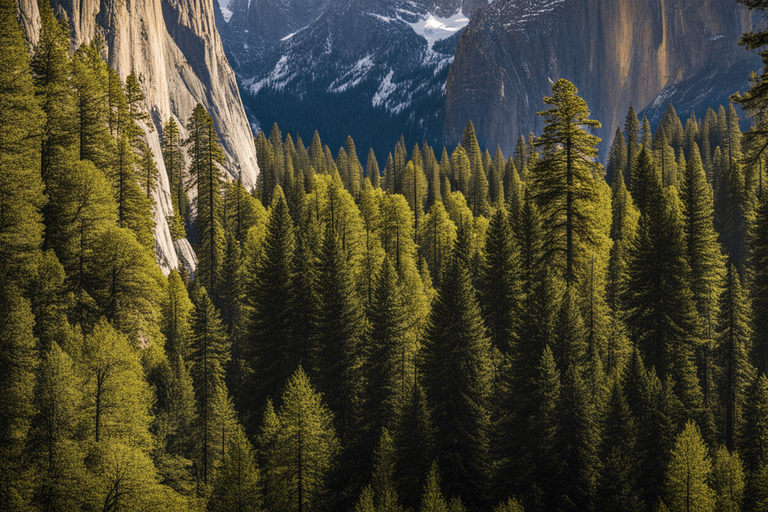
Yosemite National Park, nestled in California, is a breathtaking expanse covering 1,200 square miles. A magnet for nature enthusiasts, it attracts around 3.5 million visitors annually, ranking among the most visited national parks in the United States. Spanning 747,956 acres along the Sierra Nevada mountain range, Yosemite dwarfs even the grandeur of New York City.
Name Origins and Native Inhabitants
The name “Yosemite” itself stems from the Miwok language, translating to ‘those who kill,’ a term once used by the Miwok people. Remarkably, the Ahwaneechee Native Americans called Yosemite Valley home for over 4,000 years.
Historical Significance
UNESCO Recognition and Presidential Preservation
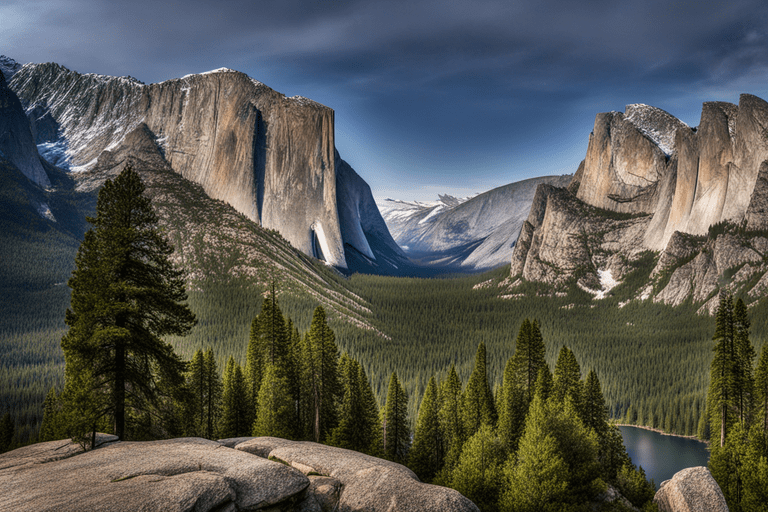
Designated a UNESCO World Heritage Site in 1984, Yosemite holds a unique historical significance. It holds the honor of being the first land area preserved by the US government, with President Lincoln setting aside Yosemite Valley and Mariposa Grove as the nation’s inaugural public preserve. A pivotal figure in this preservation was John Muir, a Scottish naturalist, writer, and conservationist, who eloquently expressed, “No temple made with human hands can compare with Yosemite.”
Natural Wonders of Yosemite
Diverse Ecosystem and Glacial Origins
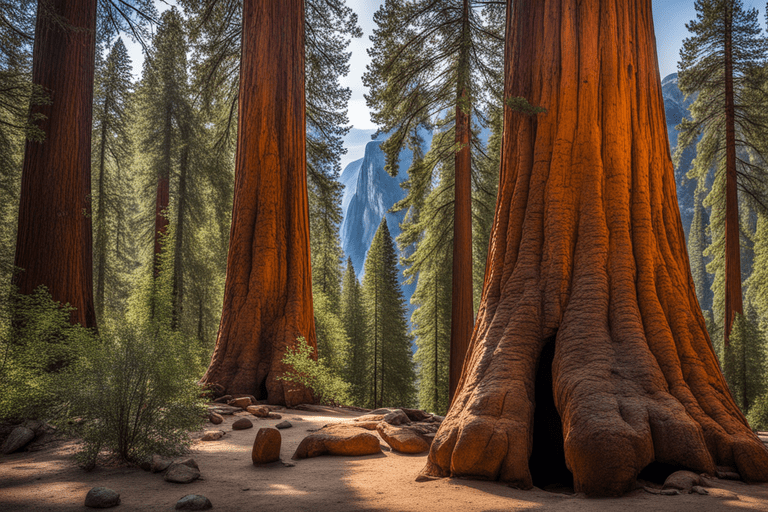
Yosemite’s natural wonders are truly enchanting. Home to giant Sequoia trees and a diverse ecosystem supporting over 400 species, the park experiences a Mediterranean climate. Glaciers sculpted Yosemite Valley, and it is one of the rare places on Earth where the lunar rainbow, or “Moonbow,” graces the night sky. The granite rock formations, dating back 100-85 million years, emanate a fiery glow at sunset.
Impressive Waterfalls and Unique Rock Formations
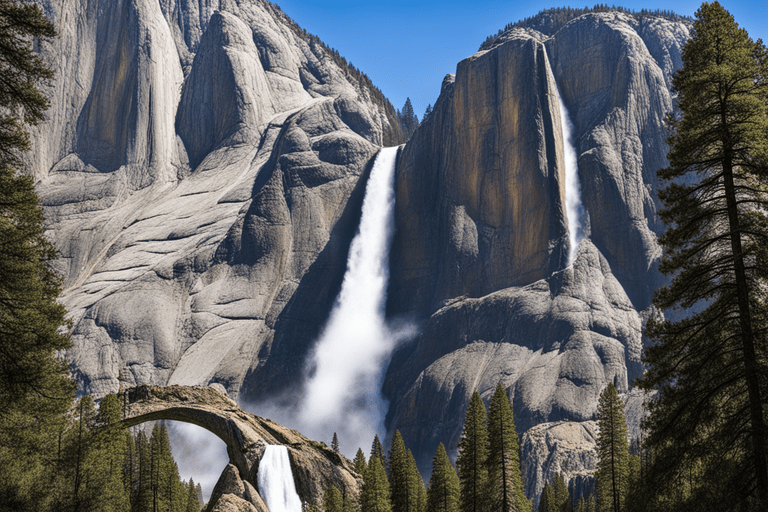
Notably, Yosemite boasts some of the tallest waterfalls globally, with Yosemite Falls reigning supreme at 2,425 feet. El Capitan, the world’s largest monolith, stands tall at 3,593 feet, while Mt. Lyell claims the title of Yosemite’s highest peak. The park is a haven for diverse wildlife, hosting 11 endangered species, 150 bird species, and 77 mammal species.
Yosemite’s Unique Landmarks and Phenomena
Annual Spectacles and Legends
Yosemite offers a spectacle of natural wonders. The annual Firefall in early Spring, Horsetail Fall’s liquid fire illusion, and Ribbon Fall’s majestic single-drop waterfall during Spring are must-see marvels. Mirror Lake, a tourist hotspot, reflects the grandeur of Half Dome, a granite rock formation.
Half Dome Legend and Geological Marvel
The intriguing legend of Half Dome, as told by the Ahwahnechee tribe, likens its shape to a Mono-Indian woman. Geologically, it results from erosion, but the tribal narrative adds an extra layer of mystique, suggesting tear stains and Mirror Lake’s origin.
Yosemite Travel Tips
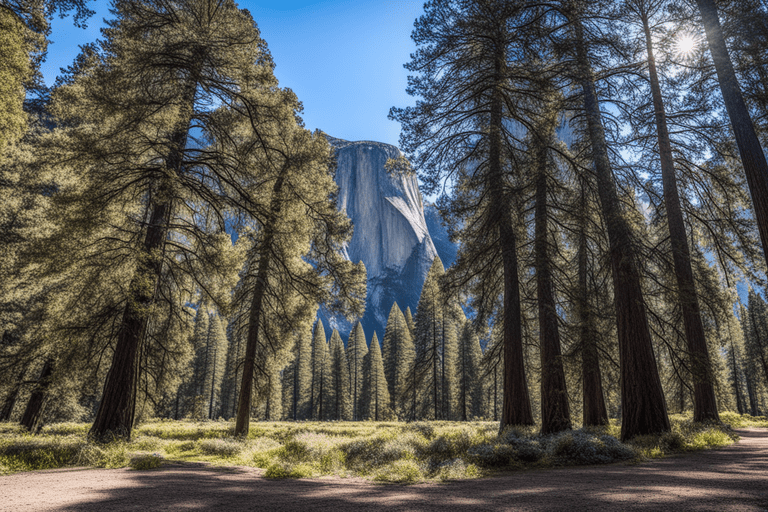
Optimal Visiting Times and Post-COVID Reservations
Planning a visit to Yosemite requires careful consideration. The park experiences peak tourism from May to October, reaching its zenith in August. Post-COVID, reservations are imperative during peak seasons, and separate camping ground reservations can be made through the official NPS website.
Diverse Elevations and Olympic Aspirations
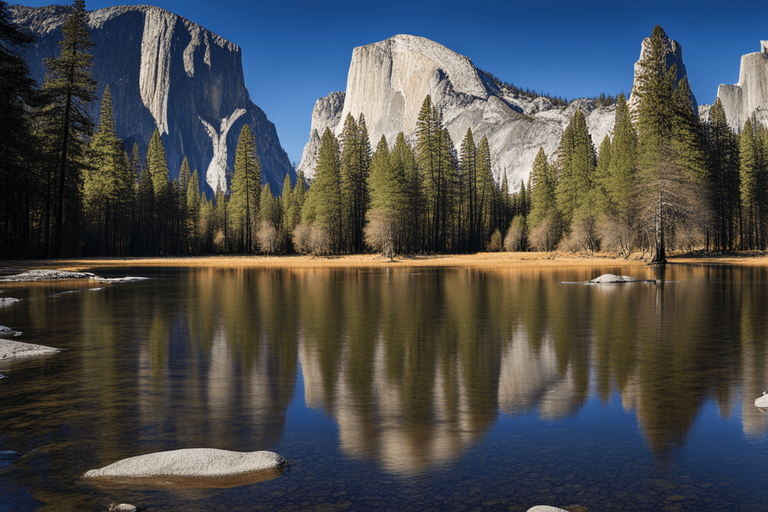
Yosemite’s diverse elevations, ranging from 2,000 to 13,000 feet, provide a unique experience. The park once aspired to host the 1932 Winter Olympics, showcasing its commitment to combining nature and sport. With five entrances, including the scenic Tioga Pass on the eastern side, Yosemite beckons explorers with over 750 miles of trails in its wilderness.
Recognition and Entrance Information
In 2014, Yosemite National Park earned the distinction of being one of the seven natural wonders of North America. Entry fees vary based on vehicle type, and reservations can be made through the official nps.gov website. Embark on a journey to Yosemite National Park, where nature’s wonders unfold in grandeur and mystery.
FAQs
A: The name “Yosemite” derived from the Miwok word meaning “those who kill.” It was a term used by the Miwok people. The name reflects the rich indigenous history of the region.
A: Scottish naturalist and conservationist John Muir played a key role in creating Yosemite National Park. He famously wrote, “No temple made with human hands can compare with Yosemite,” emphasizing the park’s natural beauty and spiritual significance.
A: Yosemite known for its granite rock formations, shaped by ancient glaciers. The rocks, dating back 100-85 million years, glow at sunset due to the unique composition of minerals reflecting the warm sunlight.
A: Horsetail Fall, a famous for reflecting the setting sun’s light during spring, creating a mesmerizing liquid fire effect. Ribbon Fall, on the west side of El Capitan, is the longest single-drop waterfall in North America, visible only in spring.
A: Mirror Lake, a popular tourist spot known for its clear reflection of Half Dome. According to the Ahwahnechee tribe, Half Dome resembles a Mono-Indian woman, and the dark vertical lines of lichens on the rock are interpreted as tear stains, with her tears forming Mirror Lake. Geologists attribute this shape to erosion.